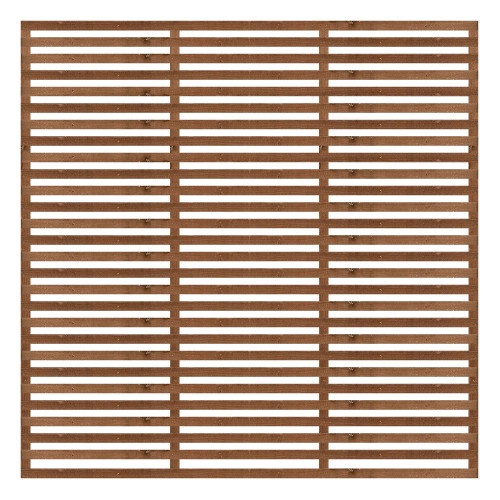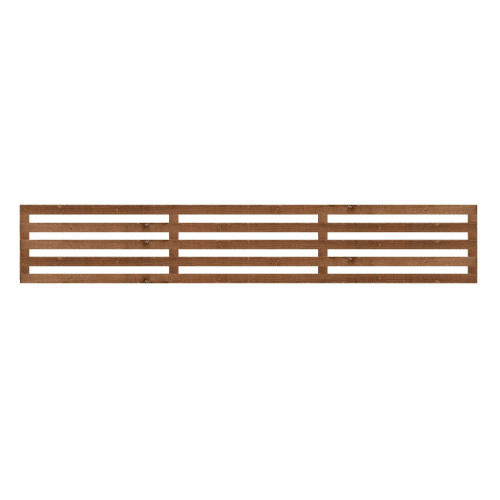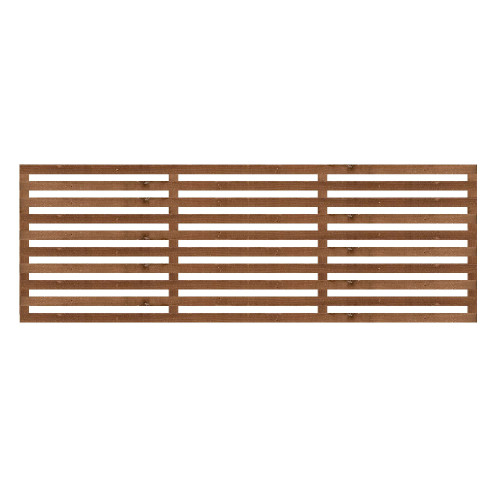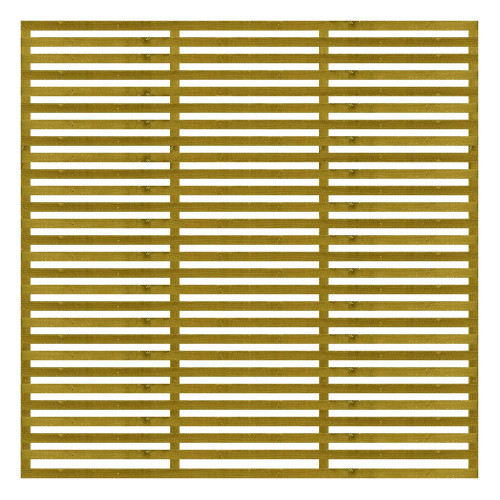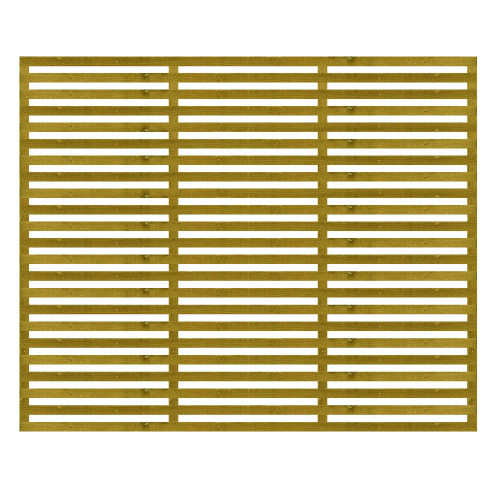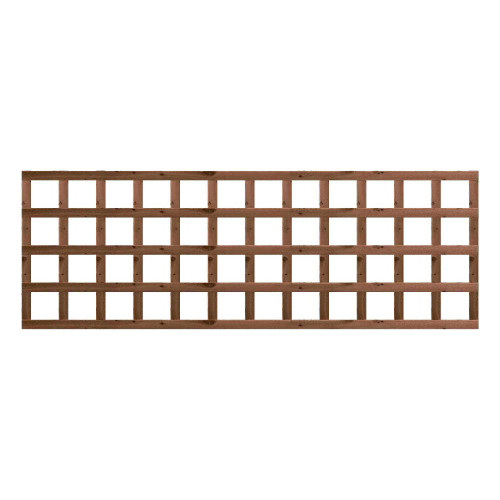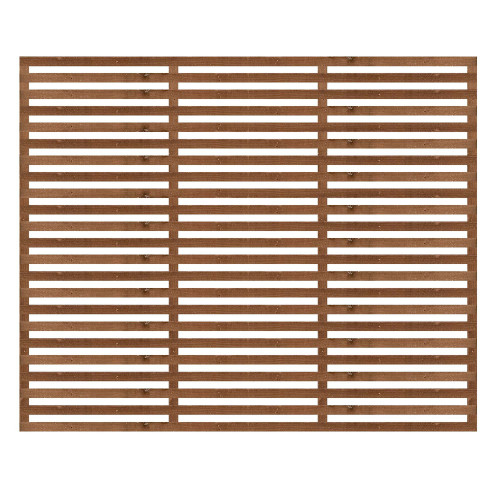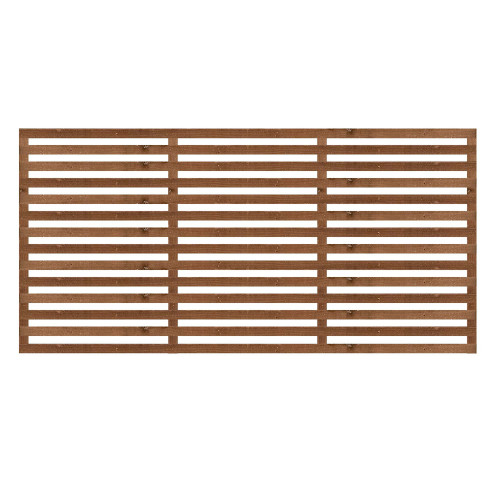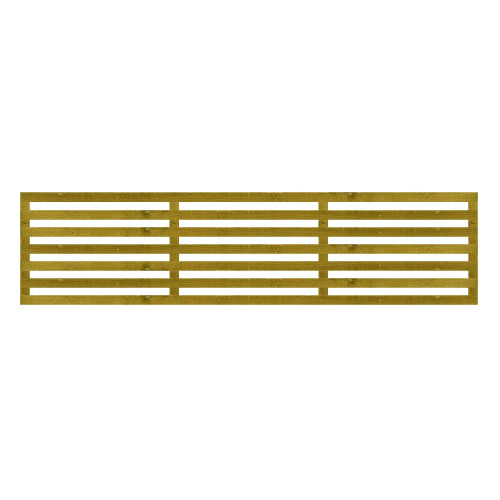At East Coast Fencing, we offer a comprehensive range of wooden trellis panels that not only enhance the aesthetic appeal of your garden but also provide practical benefits. Our trellis panels are crafted using high-quality, pressure-treated timber, ensuring durability and resilience against the elements. Whether you're looking to create climbing spaces for your plants or add a decorative touch to your garden, our wooden trellis panels are the perfect solution.
Our wooden trellis panels come in a variety of designs, each catering to different tastes and garden styles. The natural timber finish of our panels blends seamlessly with any garden décor, making them a versatile choice for both traditional and contemporary settings. Additionally, the pressure treatment process ensures that the wood remains rot-resistant, providing you with a long-lasting garden feature.
Beyond their aesthetic value, our trellis panels are also highly functional. They can be used to create garden partitions, offer support for climbing plants, or even provide a sense of privacy without obstructing light. Explore our wide selection and find the perfect wooden trellis panel to suit your landscaping needs.
Horizontal Slatted Trellis
For those seeking a modern and sleek design, our horizontal slatted trellis panels are an ideal choice. These panels feature horizontal slats that create a clean and contemporary look, perfect for minimalist garden designs. The uniform spacing between the slats allows for ample light to pass through while still offering a degree of privacy.
Our horizontal slatted trellis panels are made from pressure-treated timber, ensuring they can withstand the elements and remain a staple in your garden for years to come. The design is not only visually appealing but also highly practical, providing a sturdy framework for climbing plants to thrive. Whether you're aiming to create a stylish garden partition or simply add a decorative element to your outdoor space, these panels offer versatility and charm.
These versatile panels can be used in various ways, from enhancing the visual appeal of your garden to serving as a support structure for plants like roses and clematis. The contemporary design of our horizontal slatted trellis panels makes them a popular choice among homeowners looking to modernise their garden spaces.
Traditional Trellis
For a timeless and classic look, our traditional trellis panels are the perfect option. These panels feature a lattice design that complements any garden style, offering both beauty and functionality. The traditional trellis is particularly effective in supporting climbing plants, creating a lush and vibrant garden backdrop.
Crafted from pressure-treated timber, our traditional trellis panels are built to last, resisting rot and decay even in the harshest weather conditions. The intricate latticework not only adds a decorative touch but also provides ample support for vine plants, flowers, and even vegetables. This versatility makes traditional trellis panels a favourite among gardening enthusiasts who appreciate both form and function.
Whether used as a standalone garden feature or incorporated into existing fencing, our traditional trellis panels bring a touch of elegance and charm to any outdoor space. Their classic design ensures that they remain a stylish addition to your garden for many years, enhancing both its aesthetic and practical appeal.
Diamond Trellis
The diamond trellis panels from East Coast Fencing are a stunning addition to any garden, offering a unique and eye-catching design. The diamond pattern creates a sense of depth and texture, making it a standout feature in any landscape. Ideal for supporting climbing plants, the diamond trellis adds both beauty and functionality to your garden.
Constructed from pressure-treated timber, our diamond trellis panels are designed to withstand the elements and provide long-lasting durability. The distinctive diamond pattern not only enhances the visual appeal but also offers a robust framework for climbing plants to grow and flourish. This makes the diamond trellis an excellent choice for those looking to create a vibrant and dynamic garden space.
In addition to their aesthetic benefits, diamond trellis panels can also serve practical purposes such as creating partitions or screening off areas of your garden. Their unique design allows for creativity in garden planning, enabling you to craft a space that is both beautiful and functional.
Fence Topper Trellis
Fence topper trellis panels are an excellent way to add height and interest to your garden fencing. These panels sit atop your existing fence, providing an attractive and practical extension that enhances both privacy and aesthetic appeal. The added height of the fence topper trellis can help to deter intruders while also offering additional support for climbing plants.
Our fence topper trellis panels are made from pressure-treated timber, ensuring they are durable and resistant to rot. The design of these panels allows for easy integration with your existing fencing, creating a cohesive and polished look. Whether you're looking to add a decorative touch or improve the functionality of your fence, fence topper trellis panels offer a versatile solution.
Fence topper trellis panels are also a great way to maintain privacy in your garden without compromising on light. The open design allows sunlight to filter through while providing a barrier that enhances the sense of seclusion. This makes them an ideal addition for any garden, offering both style and practicality.
Privacy Square Trellis
Privacy square trellis panels are designed to offer maximum privacy while still maintaining an open and airy feel. These panels feature a closely spaced square pattern that effectively screens off areas of your garden, creating private spaces for relaxation and enjoyment. The design ensures that you can enjoy your garden without feeling enclosed or cut off from the surrounding environment.
Constructed from pressure-treated timber, our privacy square trellis panels are built to last, resisting the effects of weather and time. The sturdy design provides a robust barrier that enhances privacy without compromising on style. These panels are perfect for creating secluded corners in your garden or screening off unsightly areas.
In addition to their practical benefits, privacy square trellis panels also add a decorative element to your garden. The geometric design complements a variety of garden styles, making them a versatile choice for any outdoor space. Whether you're looking to create a private retreat or simply enhance the aesthetic appeal of your garden, privacy square trellis panels offer a stylish and functional solution.
Fan Trellis
Fan trellis panels are an elegant and artistic addition to any garden, offering a unique design that stands out. The fan shape creates a stunning focal point, drawing the eye and adding a touch of sophistication to your outdoor space. Ideal for supporting climbing plants, the fan trellis combines beauty and functionality in one elegant package.
Made from pressure-treated timber, our fan trellis panels are designed to withstand the elements and provide long-lasting durability. The fan shape not only enhances the visual appeal but also offers a practical framework for plants to climb and spread. This makes the fan trellis an excellent choice for gardeners looking to create a vertical garden feature.
Whether used as a standalone piece or integrated into your existing garden design, fan trellis panels bring a touch of elegance and charm to any outdoor space. Their unique design and practical benefits make them a popular choice among homeowners looking to enhance both the beauty and functionality of their garden.









